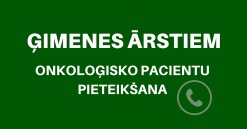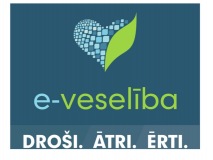Ozen S, Pistorio A, Iusan SM, Bakkaloglu A, Herlin T, Brik R, Buoncompagni A, Lazar C, Bilge I, Uziel Y, Rigante D, Cantarini L, Hilario MO, Silva CA, Alegria M, Norambuena X, Belot A, Berkun Y, Estrella AI, Olivieri AN, Alpigiani MG, Rumba I, Sztajnbok F, Tambic-Bukovac L, Breda L, Al-Mayouf S, Mihaylova D, Chasnyk V, Sengler C, Klein-Gitelman M, Djeddi D, Nuno L, Pruunsild C, Brunner J, Kondi A, Pagava K, Pederzoli S, Martini A, Ruperto N; EULAR/PRINTO/PRES criteria for Henoch-Schönlein purpura, childhood polyarteritis nodosa, childhood Wegener granulomatosis and childhood Takayasu arteritis: Ankara 2008. Part II: Final classification criteria. Paediatric Rheumatology International Trials Organisation (PRINTO). Ann Rheum Dis. 2010 May;69(5):798-806.PMID: 20413568 [PubMed - indexed for MEDLINE]
http://www.ncbi.nlm.nih.gov/pubmed/20413568
Kopsavilkums
To validate the previously proposed classification criteria for Henoch-Schönlein purpura (HSP), childhood polyarteritis nodosa (c-PAN), c-Wegener granulomatosis (c-WG) and c-Takayasu arteritis (c-TA).
Step 1: retrospective/prospective web-data collection for children with HSP, c-PAN, c-WG and c-TA with age at diagnosis <or=18 years. Step 2: blinded classification by consensus panel of a representative sample of 280 cases. Step 3: statistical (sensitivity, specificity, area under the curve and kappa-agreement) and nominal group technique consensus evaluations.
827 patients with HSP, 150 with c-PAN, 60 with c-WG, 87 with c-TA and 52 with c-other were compared with each other. A patient was classified as HSP in the presence of purpura or petechiae (mandatory) with lower limb predominance plus one of four criteria: (1) abdominal pain; (2) histopathology (IgA); (3) arthritis or arthralgia; (4) renal involvement. Classification of c-PAN required a systemic inflammatory disease with evidence of necrotising vasculitis OR angiographic abnormalities of medium-/small-sized arteries (mandatory criterion) plus one of five criteria: (1) skin involvement; (2) myalgia/muscle tenderness; (3) hypertension; (4) peripheral neuropathy; (5) renal involvement. Classification of c-WG required three of six criteria: (1) histopathological evidence of granulomatous inflammation; (2) upper airway involvement; (3) laryngo-tracheo-bronchial involvement; (4) pulmonary involvement (x-ray/CT); (5) antineutrophilic cytoplasmic antibody positivity; (6) renal involvement. Classification of c-TA required typical angiographic abnormalities of the aorta or its main branches and pulmonary arteries (mandatory criterion) plus one of five criteria: (1) pulse deficit or claudication; (2) blood pressure discrepancy in any limb; (3) bruits; (4) hypertension; (5) elevated acute phase reactant.
European League Against Rheumatism/Paediatric Rheumatology International Trials Organisation/Paediatric Rheumatology European Society propose validated classification criteria for HSP, c-PAN, c-WG and c-TA with high sensitivity/specificity.
Pavare J, Grope I, Kalnins I, Gardovska D. High-mobility group box-1 protein, lipopolysaccharide-binding protein, interleukin-6 and C-reactive protein in children with community acquired infections and bacteraemia - a prospective study. BMC Infectious Diseases 2010; 16:10-28.PMID: 20158885 [PubMed - indexed for MEDLINE].
http://www.ncbi.nlm.nih.gov/pmc/articles/PMC2831899/
Kopsavilkums
Even though sepsis is one of the common causes of children morbidity and mortality, specific inflammatory markers for identifying sepsis are less studied in children. The main aim of this study was to compare the levels of high-mobility group box-1 protein (HMGB1), Lipopolysaccharide-binding protein (LBP), Interleukin-6 (IL-6) and C-reactive protein (CRP) between infected children without systemic inflammatory response syndrome (SIRS) and children with severe and less severe sepsis. The second aim was to examine HMGB1, LBP, IL6 and CRP as markers for of bacteraemia.
Totally, 140 children with suspected or proven infections admitted to the Children's Clinical University Hospital of Latvia during 2008 and 2009 were included. Clinical and demographical information as well as infection focus were assessed in all patients. HMGB1, LBP, IL-6 and CRP blood samples were determined. Children with suspected or diagnosed infections were categorized into three groups of severity of infection: (i) infected without SIRS (n = 36), (ii) sepsis (n = 91) and, (iii) severe sepsis (n = 13). They were furthermore classified according bacteraemia into (i) bacteremia (n = 30) and (ii) no bacteraemia (n = 74).
There was no statistically significant difference in HMGB1 levels between children with different levels of sepsis or with and without bacteraemia. The levels of LBP, IL-6 and CRP were statistically significantly higher among patients with sepsis compared to those infected but without SIRS (p < 0.001). Furthermore, LBP, IL-6 and CRP were significantly higher in children with severe sepsis compared to those ones with less severe sepsis (p < 0.001). Median values of LBP, IL6 and CRP were significantly higher in children with bacteraemia compared to those without bacteraemia. The area under the receiver operating curve (ROC) for detecting bacteraemia was 0.87 for both IL6 and CRP and 0.82 for LBP, respectively.
Elevated levels of LBP, IL-6 and CRP were associated with a more severe level of infection in children. Whereas LBP, IL-6 and CRP seem to be good markers to detect patients with bacteraemia, HMGB1 seem to be of minor importance. LBP, IL-6 and CRP levels may serve as good biomarkers for identifying children with severe sepsis and bacteraemia and, thus, may be routinely used in clinical practice.
Sjakste T, Trapina I, Rumba-Rozenfelde I, Lunin R, Sugoka O, Sjakste N. 2010 Identification of a novel candidate locus for juvenile idiopathic arthritis at 14q13.2 in the latvian population by association analysis with microsatellite markers. DNA Cell Biol. 29(9):543-51. [PubMed - indexed for MEDLINE].
http://www.ncbi.nlm.nih.gov/pubmed/20136554
Kopsavilkums
To identify novel juvenile idiopathic arthritis (JIA) susceptibility loci, a 270 kb genomic region encompassing FAM177A1, KIAA0391, and PSMA6 genes was genotyped in 97 oligoarthritis (JIoA) and 50 polyarthritis (JIpA) patients and 230 individuals without autoimmune disorders by five microsatellites (MS) previously described as HSMS markers of the 14q13.2 region. Direct sequencing revealed two variable components of the (CAA)(n)(A)(m) motif in HSMS602 marker (FAM177A1 gene). Repeat (AC)(5)AT(AC)(n) of the HSMS701 (KIAA0391 gene) was variable in the Latvian population only in its downstream part. Allele (AC)(5)AT(AC)(15) of HSMS701 was found to be strongly associated with JIA (p = 4.91 x 10(-5), odds ratio [OR] = 18.87) and modestly associated with JIpA (p = 1.64 x 10(-3), OR = 15.69). Alleles (AC)(5)AT(AC)(18) of HSMS701 and (TG)(10) of HSMS702 appear to be JIA and JIoA risk factors (p = 1.09 x 10(-3), OR = 2.64 and p = 2.00 x 10(-3), OR = 7.67, respectively), but allele 168 bp of HSMS602 (p = 9.02 x 10(-4), OR = 0.35) appears to be protective. Two heterozygote genotypes (TG)(20/23) of the HSMS006 and (AC)(22/23) of the HSMS801 showed association with JIA (p < 2 x 10(-3)), but homozygote (TG)(19/19) was found to be protective (p = 5.41 x 10(-4), OR = 0.12). Our results define an additional susceptibility locus for JIA at the 14q13.2 genomic region encompassing KIAA0391 and PSMA6 genes.
Karaškēvica J, Rozīte S, Rumba-Rozenfelde I, Ebela I. Medicīniskās palīdzības pieejamības saistība ar iedzīvotāju saslimstību un mirstību. LU raksti Medicīna Nr. 755, 2010 (pieņemts publicēšanai)
http://www.lu.lv/fileadmin/user_upload/lu_portal/apgads/PDF/LUR-755_Med…
Kopsavilkums
Veselības statistikas dati apliecina augstu Latvijas iedzīvotāju, tajā skaitā bērnu, mirstību, saslimstību ar atsevišķām slimībām, invaliditāti un hronisko slimību izplatību. Augsta ir iedzīvotāju mirstība to nāves cēloņu dēļ, kurus Pasaules Veselības organizācija ir definējusi kā „novēršamus". Tai pašā laikā medicīniskās palīdzības pieejamības rādītājs - ambulatoro apmeklējumu skaits uz 1 iedzīvotāju - būtiski nemainās.
Darba mērķis: salīdzināt un izvērtēt veselības aprūpes fi nansējumu trijās Baltijas valstīs. Novērtēt saslimstības, mirstības un veselības aprūpes pieejamības sakarības.
Materiāli un metodes: izmantotas veselības nozares resursu un to lietošanas statistikas datubāzes, PVO European Health for All, Nāves cēloņu datubāze, onkoloģisko un citu slimību reģistru informācija. Datu apstrādē izmantota SPSS programmas 15. versija. Analīzei lietotas statistiskās datu analīzes, aprakstošās statistikas un sakarību pētīšanas metodes.
Rezultāti: Latvijā ir viszemākais valdības un visaugstākais privātā veselības aprūpes finansējuma īpatsvars, kā arī viszemākais pirktspējas paritātes standarta līmenis uz 1 iedzīvotāju. Šie rādītāji ietekmē veselības aprūpes pieejamību. Izmantojot sakarību pētīšanas metodes, iegūti rezultāti, kas apliecina saslimstības, mirstības un veselības aprūpes pieejamības sakarības. Korelācijas koefi cients (r = -0,78) apstiprina ciešu negatīvu saistību starp ambulatoriem apmeklējumiem (pieejamības rādītājs) un saslimstību ar visu formu aktīvu tuberkulozi uz 100 000 iedzīvotāju, starp ambulatoriem apmeklējumiem un ļaundabīgo audzēju 4. stadijas klīniskās grupas īpatsvaru (r = -0,89), starp ambulatoriem apmeklējumiem un operēto skaitu čūlas perforācijas dēļ (r = -0,83), ambulatoriem apmeklējumiem un jauniem invaliditātes gadījumiem (r = 0,78).
Secinājumi: nepietiekamais veselības aprūpes valdības fi nansējums ietekmē veselības aprūpes pieejamību, kura savukārt būtiski iespaido saslimstību un mirstību. Pieaugot ambulatoro apmeklējumu skaitam, var būtiski samazināt atsevišķu slimību incidenci un tās izraisīto mirstību. Iegūtos rezultātus var lietot slimību skaita prognozēšanai un kompensējamo medikamentu iegādes plānošanai.
Eihvalde L, Pavāre J, Grope I, Rasnačs O, Gardovska D. Sistēmiskā iekaisuma atbildes sindroma (SIRS) un sepses prevalence BKUS neatliekamās palīdzības nodaļā. 2009. gada RSU Zinātnisko rakstu krājuma Internās medicīnas sadaļa, publicēts 2010.g.
Nikulshin S, Pavare J, Grope I, Rasnachs O, Gardovska D. CD64 expression on neutrophil leukocytes correlates with inflammation markers in pediatric patients with SIRS. Riga Stradins university, Collection of Scientific Papers 2009, 19-26., published in 2010.
Grūtupa M, Grope I, Pavāre J, Kovaļova Ž, Gardovska D, Rasnačs O. CRP, IL6, PCT un LBP diagnostiskā nozīme sepses attīstības un neitropenijas ilguma prognozēšanai pacientiem ar ļaundabīgiem audzējiem un febrilu neitropeniju. 2009. gada RSU Zinātnisko rakstu krājuma Internās medicīnas sadaļa, publicēts 2010.
Eihvalde L, Līkopa Z, Grope I, Gardovska D. Respiratori sincitiālā vīrusa infekcijas epidemioloģiskās un klīniskās īpatnības Bērnu Klīniskajā Universitātes slimnīcā ārstētajiem pacientiem, sagatavots publicēšanai 2010. gada RSU Zinātnisko rakstu krājuma Internās medicīnas sadaļā.
Polukarova S, Grope I, Pavāre J, Gardovska D. Iekaisuma marķieru īpatnības un sepses prevalence bērniem ar sistēmiskā iekaisuma atbildes sindromu pirmajā dzīves gadā, sagatavots publicēšanai 2010. gada RSU Zinātnisko rakstu krājuma Internās medicīnas sadaļā.
Engelis A, Abola Z, Petersons A, Pilmane M. A rare case of paraesophageal hernia in infancy. Suppl 234/10 European Surgery,- Acta Chirurgica Austriaca,- Abstracts.-39th International Symposium of Pediatric Surgery , Obergurgl, April 18-20, 2010,- (10),P.5.
Boka S, Pilmane M, Kavak V. Embryology and Anatomy for Health Sciences, 2010, RSU, pp. 450.


